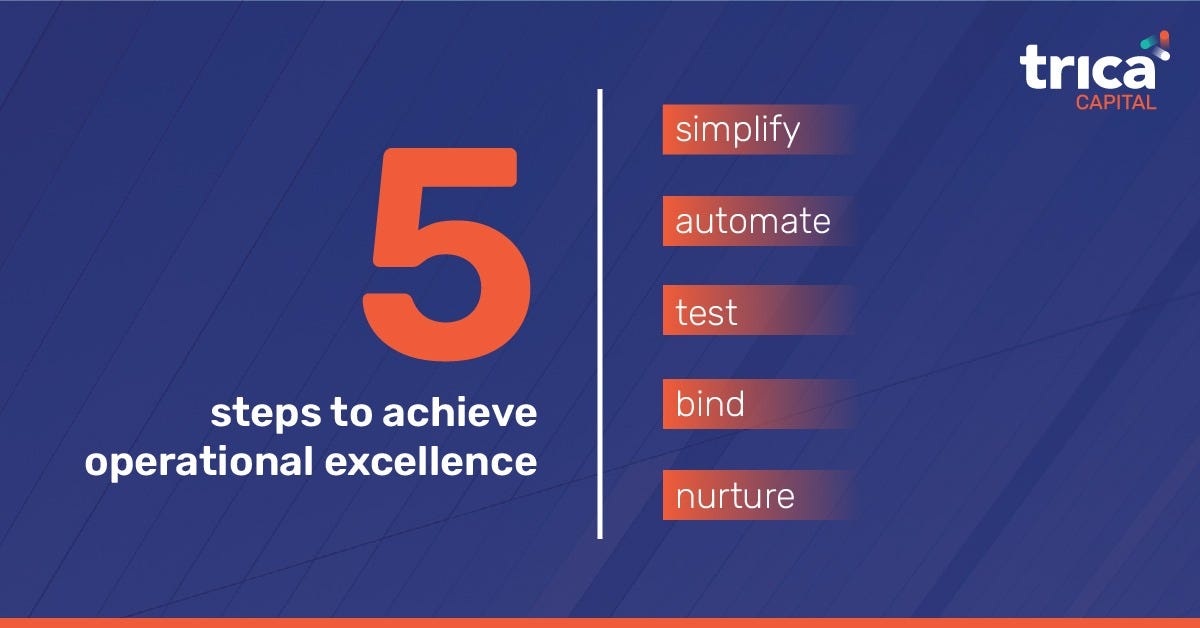
The Human in the Process
Operational excellence.
When one starts a business, a founder’s first thoughts are: how do I acquire customers, how do I service them and scale, how do I get the right business and tech team together, how do I start generating revenues. I haven’t heard founders’ ask, “How do I achieve operational excellence in what I do?” It’s akin to the self actualization need in Maslow’s hierarchy. But is it really?

One often finds innovation where one least expects it. Organizations are typically rooted in their fixed processes and systems, with a high resistance to change. Imagine what would have happened if Henry Ford said I’ll build the first car like they built the horse-cart? The world may not have seen the conveyor belt and we may not have had the revolution that came with it back in the early 1900s. And guess what — this simple contraption ensured that Ford was able to service more customers, scale quickly and generate higher revenues, driven in good measure by operational efficiency.
Let’s look at a few other examples. Amazon today has probably the largest product line one can imagine — starting with books to other e-commerce to digital content. Amazon has set high standards in operational excellence today with a dynamic business model that they have been able to replicate seamlessly across geographies, ethnicities, distribution networks, product range and more. If they didn’t get their process right with the first product, i.e. books, would they really have been able to replicate it to so many other products and scale to this size?
Having the right execution and process is the cornerstone to building a sustainable, scalable, inimitable business. If the execution is not right, great strategies can crumble into a heap and at the same time we want to automate everything, cut the human out of the equation altogether to achieve scale and reduce costs.
But I do believe that if the people equation doesn’t fit it, or people are not aligned to the “process”, the best laid plans turn to waste. This may seem counterintuitive to most who believe that with technology and well written processes, you can achieve almost anything.
To explain why this is counterintuitive, let me tell you of an incident that played out a few years ago. I was a fresh engineering grad (IT no less), and that’s when the whole banking digital revolution happened. I remember telling my grandfather that he needn’t go to the branch anymore. But he insisted on walking in the afternoon sun to the branch, passbooks in hand; filling forms, standing in queues and walking back. Out of curiosity, I followed him to the branch one day, and this is what I saw: a smiling branch manager who recognized him from his many visits to the branch, a security guard who pulled up a chair for him to sit and offered him some tea, a teller who engaged him in chit chat while processing his forms. He spent 20 minutes at the branch to deposit one cheque and update his passbook. You might think this a waste of time but for him, it was 20 minutes of enriching conversation with five people. This would ensure he kept banking with them and visiting them even for small matters. All the product development, cutting edge UI/UX of our banking apps cannot possibly achieve this level of engagement and stickiness.
Today you can open bank accounts within minutes. Yet, with all the glory of netbanking, the decision to stay with a bank often depends on the relationship manager you are dealing with. I believe service has become the key differentiator for many businesses given technology has become commoditised. And my friend, “processes” don’t offer services, “humans” do.
I am not saying do not automate or introduce processes and technology; but in the rush to automate and go digital and achieve faster turnarounds, do not take the human out of the picture. People and processes must work hand-in-hand to achieve sustainable scale and growth. The answer lies in finding a middle path.
Tongue firmly in cheek, I’m going to attempt a 5-step process to go about this:

- Simplify: When trying to find innovative ways of doing things, organizations are often bound by rigid functional processes and cognitive biases. Often, the best ways are simple and hidden in plain sight. Complex solutions only make adoption and ongoing adherence even more complicated. Looking at existing processes, finding a way to simplify them, and laying it out to the last detail is a good start.
- Automate: Once the detailed process is in front of you, identify repetitive simple tasks. These are the ones you must automate. Even the longish string of repetitive tasks which have clearly identifiable inputs and outputs.
- Test: Test, test and then test some more. The only way you can achieve a perfect process is by allowing yourself to go wrong enough times to test all the edge cases and tighten every nut and bolt. We once did a transaction that tested every legal limit in the structure. It drove us up the wall, but we are glad for it, because now we have tightened the process so much, there’s a slim chance of going wrong. We have achieved our own six sigma in that process.
- Bind: Identify the skill sets required to run the process either entirely or in portions. Bind the people with the right skills to the process to ensure the quality of deliverable is high. All this effort can’t be for achieving mediocre output. You are aiming to “wow” your customer / user. Ensure the right people are doing the right role and are trained for it. If you have introduced new systems and tools, spend enough time in training and aligning the people to the systems.
- Nurture: Identify roles that are mission critical to service delivery and that differentiate your business from your peers. Hone and nurture the talent that people in these roles bring to it. Give them the right ammunition in terms of information, tools, etc that are needed to achieve excellence.
There are enough and more cases around us where the rush to automate and digitize and bring in AI and ML (and a few other abbreviations) has killed the product altogether and made people lose sight of what they are building in the first place.
We can only strive to achieve operational excellence. It’s the amalgam of people and process that helps us get there. Growing in small steps, perfecting each as we go, is a sure-fire way to scale sustainably.








